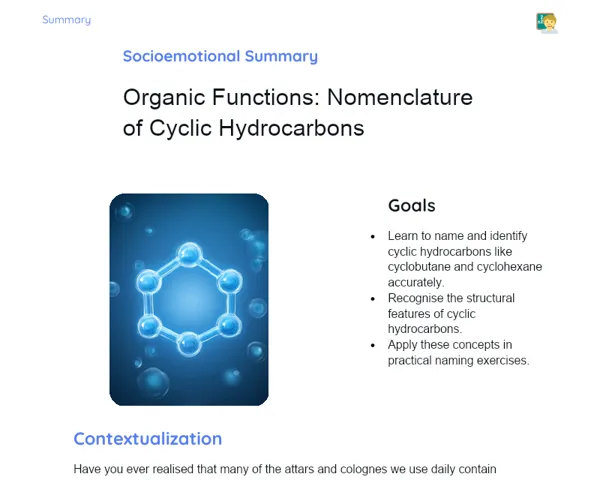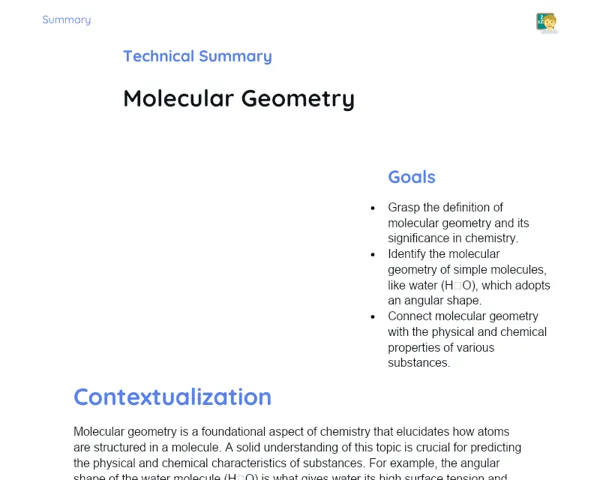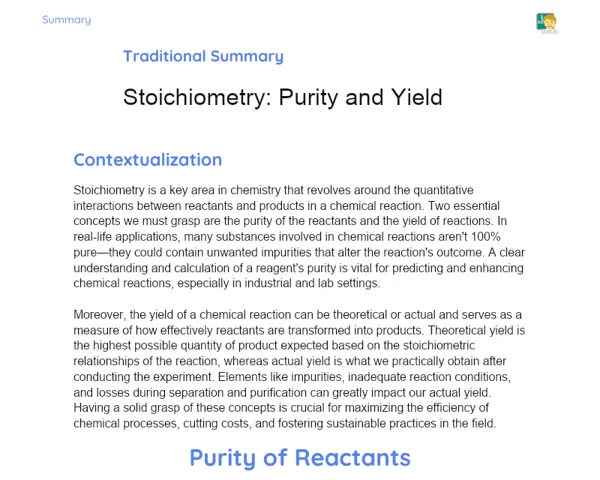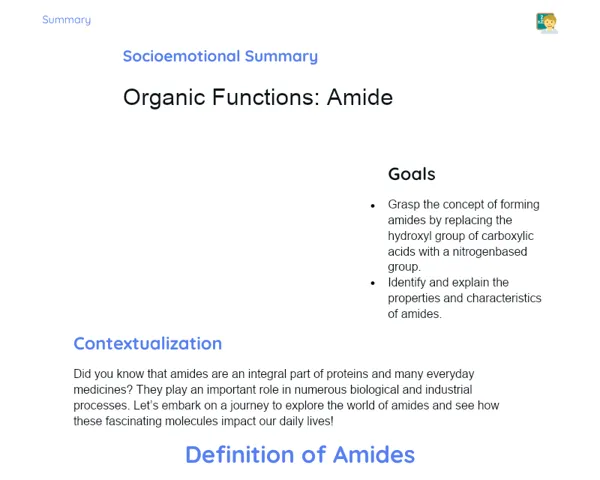Summary Tradisional | Redox Equation Balancing Reactions
Contextualization
Redox reactions, which stand for oxidation-reduction reactions, refer to chemical processes where electrons are transferred between substances. These reactions are crucial not just in biological systems but also in various industries. For instance, they play a key role in cellular respiration, an essential process for all living organisms, and in the manufacturing of batteries that power our smartphones and laptops. A solid understanding of these reactions, as well as the ability to balance them, is vital for optimizing the efficiency and safety of numerous chemical processes that influence our daily lives.
Balancing redox equations is a fundamental skill in chemistry, guaranteeing that both mass and charge conservation is upheld in any reaction. This entails that the number of atoms and the overall charge of both reactants and products must match. We will delve deeply into two main methods for balancing these equations: the oxidation number method and the half-reaction method. Mastering both methods will equip you to apply them successfully in various scenarios.
To Remember!
Understanding Redox Reactions
Redox reactions are chemical processes involving a transfer of electrons between substances. In these reactions, one substance loses electrons (oxidation), while another gains those electrons (reduction). This exchange of electrons is a vital component in many chemical reactions encountered in our daily lives, whether in biological functions or industrial applications.
Oxidation and reduction happen simultaneously within a redox reaction. For instance, in cellular respiration, glucose undergoes oxidation to yield carbon dioxide and water, releasing energy that cells utilize effectively. Additionally, in industrial settings, redox reactions prove to be essential in extracting metals from their ores and in how batteries and electrochemical cells function.
A thorough grasp of redox reactions is indispensable, extending beyond chemistry to disciplines like biology, chemical engineering, and materials science. They form the backbone of many natural and technological processes, fostering the creation of more effective and sustainable technologies.
-
Redox reactions involve the transfer of electrons.
-
Oxidation signifies the loss of electrons, whereas reduction entails the gain of electrons.
-
These reactions are significant in both biological and industrial contexts.
Oxidation Number (Nox)
The oxidation number (nox) is utilized to indicate the loss or gain of electrons of an atom within a substance. It’s a numerical value assigned to each atom, aiding in tracking electron transfers during chemical reactions. The nox can be positive, negative, or zero, contingent upon the atom's oxidation state.
The guidelines for determining nox are: the nox of an element in its elemental state is always zero; the nox of a monatomic ion equals its charge; hydrogen typically has a nox of +1, and oxygen usually has a nox of -2, although there are exceptions. Establishing the nox is crucial in pinpointing which atoms are oxidized and which are reduced in a redox reaction.
A firm understanding of nox is essential for balancing redox equations, as it allows for precise identification of changes in the oxidation state of atoms, ensuring the adherence to mass and charge conservation.
-
Nox helps in tracking electron transfer.
-
Specific rules dictate the nox of each atom.
-
It is essential for identifying oxidation and reduction processes in redox reactions.
Oxidation Number Method
The oxidation number method is a technique employed to balance redox equations as it relies on the variation of nox of the atoms involved in the reaction. The aim is to ensure that the number of electrons lost during oxidation matches the number gained during reduction, effectively balancing the equation in terms of mass and charge.
To utilize the oxidation number method, one first ascertains the nox of all elements in the equation. Then, the change in nox for the elements oxidized and reduced is ascertained. Subsequently, the coefficients in the equation are modified to ensure that the total number of electrons lost matches the electrons gained. Lastly, it’s essential to verify the balance of atoms and charges in the equation.
This method is particularly handy when dealing with intricate redox reactions where electron transfer is not immediately clear. It delivers a structured approach to ensure all changes in nox are correctly recorded.
-
Based on the variation in the nox of the atoms.
-
Equates the number of electrons lost and gained.
-
Useful for managing complex redox reactions.
Half-Reaction Method
The half-reaction method, also known as the ion-electron method, is an alternative technique for balancing redox equations. This method involves dividing the redox equation into two half-reactions: one for oxidation and another for reduction. Each half-reaction is balanced separately concerning both mass and charge before they are merged to create the complete redox equation.
To apply the half-reaction method, first, identify the oxidation and reduction half-reactions. Next, balance all atoms except for hydrogen and oxygen. After that, add water (H₂O) molecules to balance the oxygen atoms, and hydrogen ions (H⁺) to balance the hydrogen atoms. Finally, electrons need to be added to balance the charges of each half-reaction. The half-reactions are then combined, ensuring that the number of electrons lost during oxidation equals the number gained during reduction.
This method is especially advantageous for reactions taking place in aqueous environments where the presence of H₂O and H⁺ ions is typical. It provides a clear and organized way of balancing redox equations, aiding in comprehending the electron transfer process.
-
Breaks the equation into oxidation and reduction half-reactions.
-
Balances mass and charge separately in each half-reaction.
-
Suitable for reactions in aqueous environments.
Key Terms
-
Redox Reactions: Chemical processes that involve the transfer of electrons.
-
Oxidation Number (Nox): A value representing the loss or gain of electrons of an atom.
-
Oxidation: The process of electron loss.
-
Reduction: The process of electron gain.
-
Oxidation Number Method: Balancing technique that focuses on variation in nox.
-
Half-Reaction Method: Balancing strategy that divides the equation into oxidation and reduction half-reactions.
Important Conclusions
Understanding redox reactions is foundational in chemistry since they involve the transfer of electrons between substances and are critical in both biological and industrial processes. Mastering the balancing of these reactions is crucial for maintaining mass and charge conservation, offering valuable insights into the chemical processes that shape our environment.
The oxidation number (nox) serves as an essential tool for recognizing the electron variations in a redox reaction. Grasping and adeptly applying nox is key to effectively balancing redox equations using both the oxidation number method and the half-reaction method.
The ability to balance redox equations is not merely an academic requirement but has significant real-world ramifications. From energy production in batteries to the treatment of water, familiarity with these reactions fosters the development of more efficient and sustainable technologies. I urge everyone to delve deeper into this subject and its tangible applications.
Study Tips
-
Review oxidation and reduction concepts and regularly practice identifying the oxidation number (nox) in various compounds.
-
Engage in exercises to balance redox equations using both the oxidation number and half-reaction methods.
-
Discover practical applications of redox reactions, such as their roles in batteries and biological systems, to understand their relevance in everyday life.



